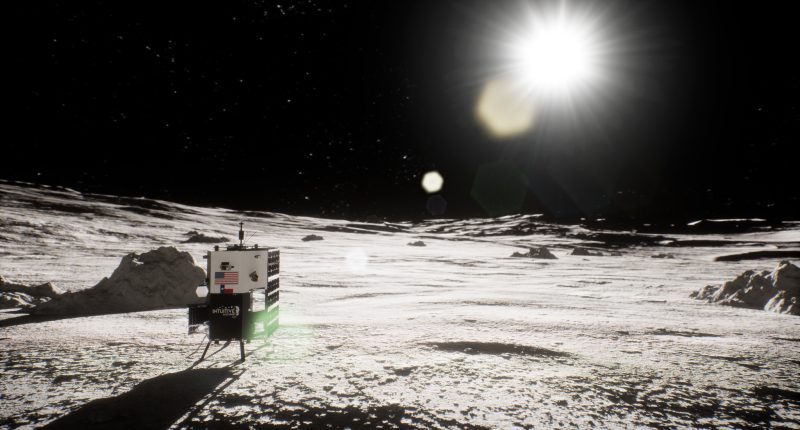THE Nova-C Odysseus probe will be preparing to make history on Valentine’s Day as the first private lunar lander to touchdown on the Moon.
The lander, built by Texas-based Intuitive Machines, is set to launch on Wednesday (14 February), when it will embark on a week-long mission to the lunar surface.
It comes just weeks after US lunar lander Peregrine, failed to reach the surface following a fuel leak.
Peregrine disintegrated upon reentry to Earth’s atmosphere just 10 days after its launch.
If successful, Odysseus will not only be the first private lunar touchdown but also the first US Moon landing in 50 years.
The 1,488lb (675kg) spacecraft will take-off aboard SpaceX’s Falcon 9 rocket from Cape Canaveral, Florida, at 5:57am GMT (12:57am ET).
READ MORE ON SPACE
Odysseus may then make a lunar landing attempt on 22 February.
Intuitive Machines is targeting a crater near the south pole, known as Malapert A, as the landing site.
Once it’s on the surface, Odysseus will operate for just two weeks – or one lunar night.
Onboard the lander are 12 payloads, including a next-gen four-camera system to capture the journey down to the surface and landing sensors built in the UK by a company called MDA.
Most read in Science
“As interest in lunar exploration grows around the world, this mission will see Intuitive Machines and MDA UK play a key part in developing services that will be integral to Nasa’s Artemis programme, contributing to science that will improve our understanding of the Moon and how we can interact with it sustainably to support future crewed missions,” UK Space Agency boss Dr Paul Bate said.
“With funding from the UK Space Agency, MDA UK is developing crucial technologies – such as the rangefinder that will help guide the mission spacecraft to the lunar south pole – providing another example of how UK-based expertise are increasingly sought after for international science and exploration missions.”
This most recent push to the Moon is part of Nasa’s Commercial Lunar Payload Services initiative, which aims to involve commercial companies in the exploration of the lunar surface.
This initiative allows the US space agency to focus on its Artemis programme, and getting boots on the moon in the next few years.
Humans on the Moon
Nasa has been channeling its efforts – and cash – into getting astronauts back on the moon in recent years.
It forms parts of a decade-long programme that is hoped to culminate with a permanent lunar base, which Nasa may begin building by the end of the decade.
As part of this mission, the space agency has ushered in private industry to keep the industry busy with rocket launches and lunar landers.
It has outsourced a number of tasks to private industry, such as designing and manufacturing its next generation of spacesuits – and the mammoth task of replacing the International Space Station.
Despite this subcontracting, Nasa has delayed its crewed Artemis Moon missions until 2025 and beyond as the agency requires more time to make its rocket technology safe.
Concerns over Nasa’s Space Launch System rocket means the first crewed Moon landing in over 50 years will take place next year instead, according to the new schedule shared last month.
Nasa’s new Artemis timeline:
- Artemis II (the first mission) moved from 2024 to September 2025.
- Artemis III moved from September 2025 to September 2026.
The Artemis IV mission that will take humans to the lunar Gateway space station in 2028 is still on track, the US space agency said.
Nasa’s Space Launch System rocket had already faced a decade of setbacks before it first rolled onto the launch pad in May 2022.
READ MORE SUN STORIES
“We are letting the hardware talk to us so that crew safety drives our decision-making,” said Catherine Koerner, Nasa’s associate administrator of its Exploration Systems Development Mission Directorate.
“We will use the Artemis II flight test, and each flight that follows, to reduce risk for future Moon missions.”
Find out more about science
Want to know more about the weird and wonderful world of science? From the Moon to the human body, we have you covered…










